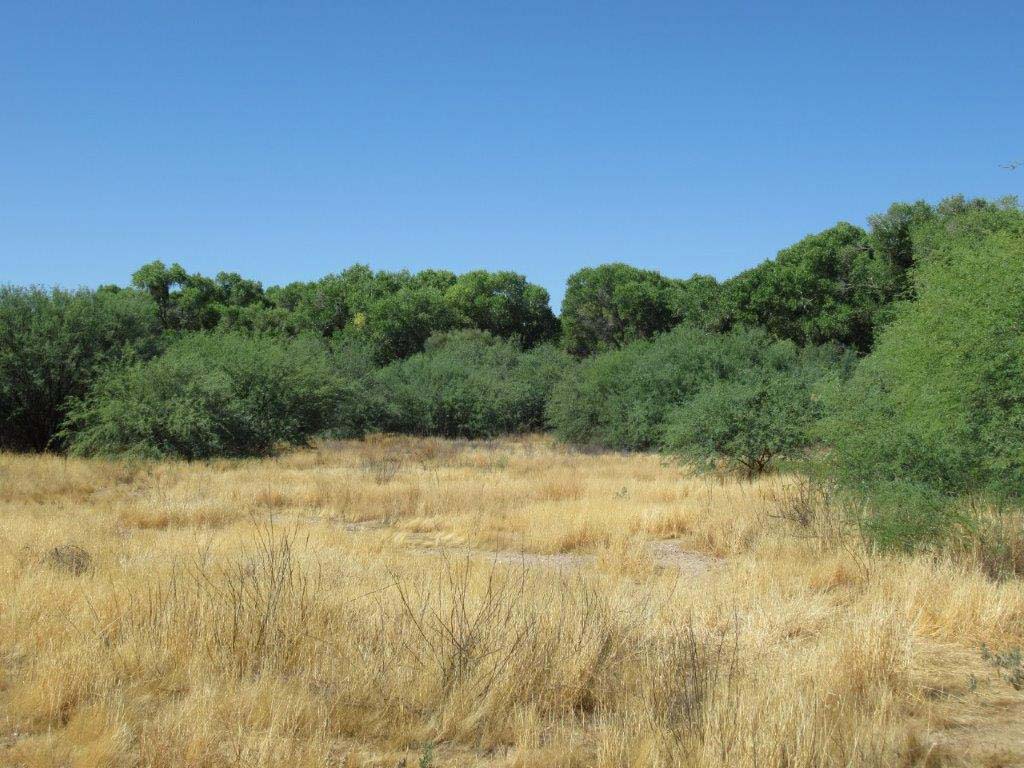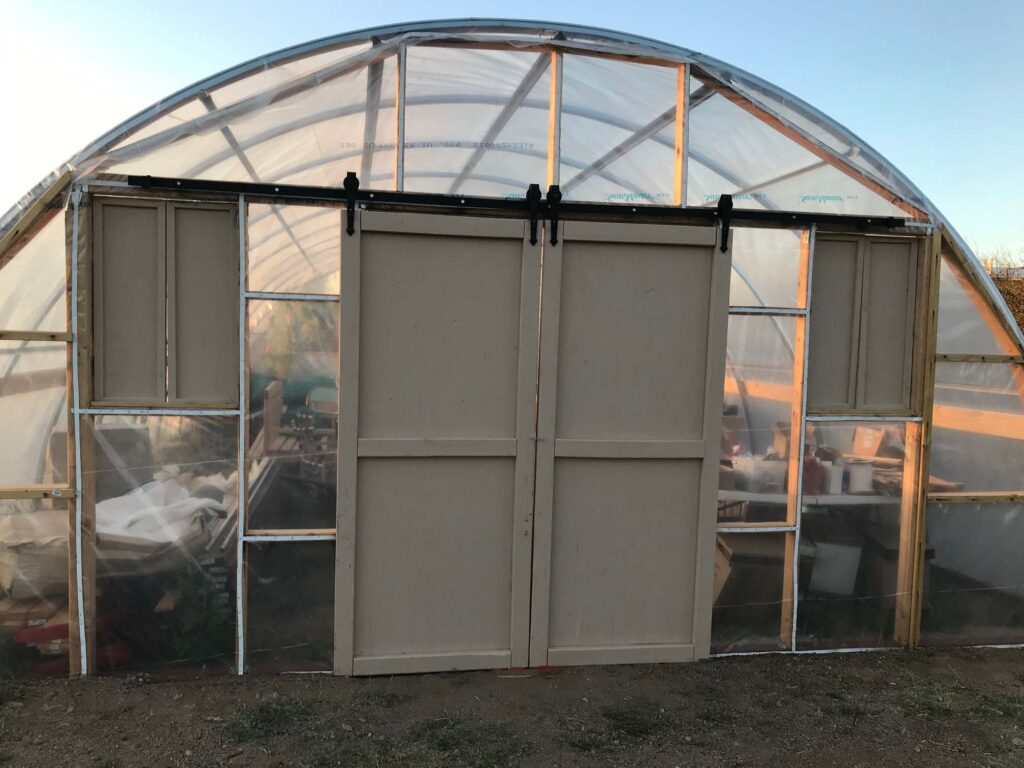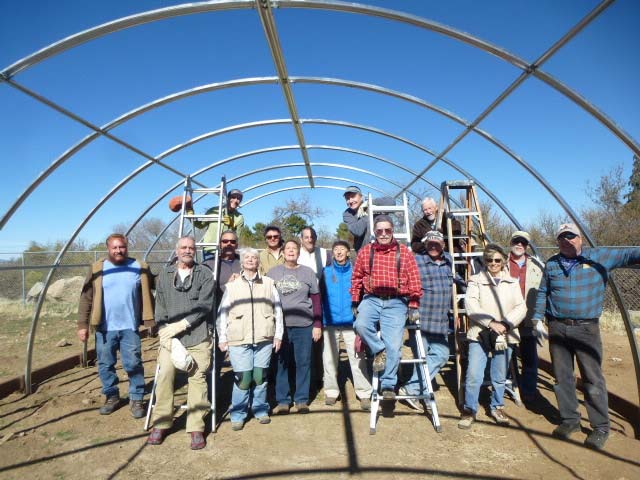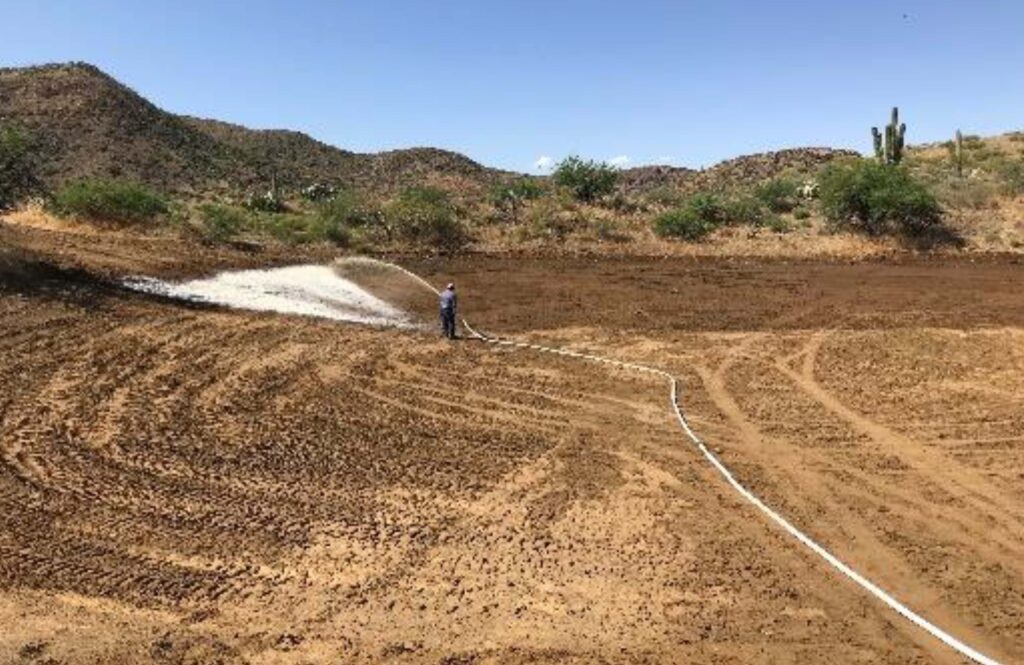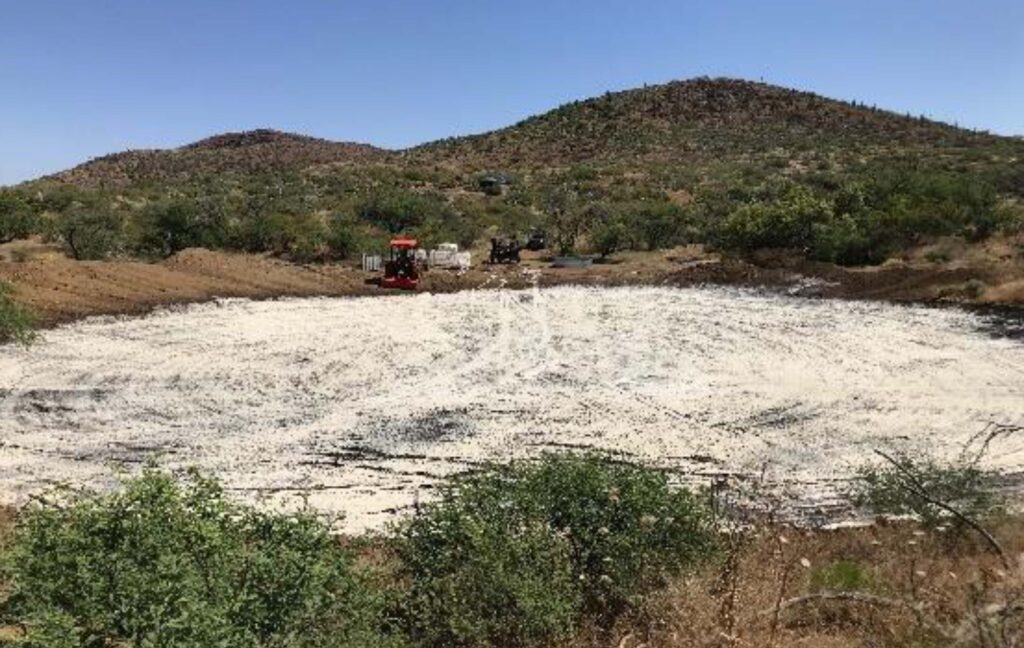Winkelman Natural Resource Conservation District (WNRCD) has helped maintain agriculture as an economic powerhouse in our region for nearly 70 years. While not every agricultural operation can be seen from our picturesque highways, there lies along our dirt roads and near our rivers and creeks a beating heart from which flows sustenance and the financial support for ranching families in the region.
Economic Impacts
According to Tim Kanavel, Pinal County’s Economic Development Director, the aggregate agriculture economic impact amount in Pinal County is $2.6 billion annually. Attempts to ascertain an economic figure for the just WNRCD were strangely difficult to locate. With some educated guesses and looking at the WNRCD’s footprint in Pinal County (see map), perhaps half of the $2.6 billion of economic impact can be attributed to the WNRCD. That is $1.3 billion of economic impact. Please note, unless better figures can be found, it is only a guess. Let put this into some context, mining represents $1.3 billion of economic impact to Pinal County according to the Arizona Mining Association. It seems clear that outside of Florence Copper near Florence, most of Pinal County’s active mining would be within the WNRCD footprint.
The WNRCD’s annual public funding includes:
• $13,000 from the Arizona Legislature
• $5,000 annually for the Education Center, sponsored by the WNRCD
All other income is from the grants, contracts, gifts which include monies from cooperators. (Cooperators are stakeholders which control natural resources within the WNRCD. Cooperators are encouraged to make a donation each year, but it is not required for participation. Volunteers for WNRCD activities are always sought. The WNRCD contact information is included below.)
During special projects such as public policy issues affecting ranching, donations may increase to better utilize local resources. The WNRCD works to make their industry’s position heard and educate policy makers and regulators about the impact of their decisions. Bill Dunn, a director of WNRCD, reported those donations can surge to as much as $20,000 or fall to negligible levels.
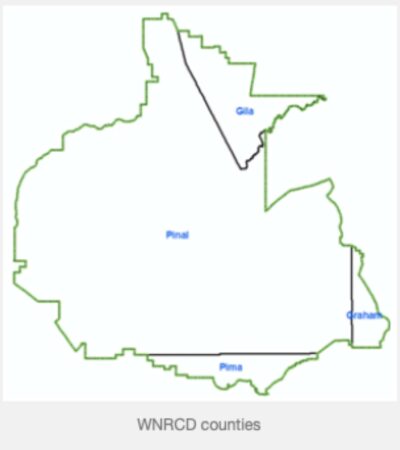
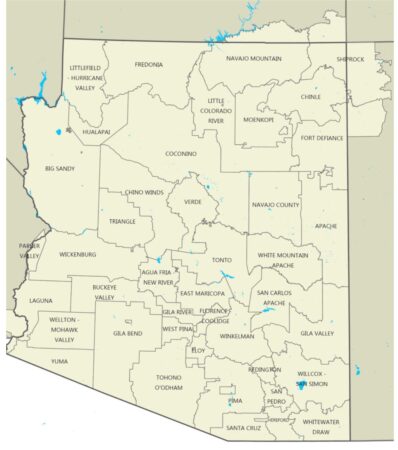
The Nature Conservancy and the WNRCD
The Nature Conservancy and WNRCD have long coexisted in the Copper Corridor.
While the both The Nature Conservancy and WNRCD have the missions of conservation, they differ in the specific execution and have varying goals. For example the WNRCD seems to focus on agriculture sustainability while the Nature Conservancy will focus on conserving or restoring the land. In many cases these goals can work together to achieve both sustainability of the land and bio systems as well as responsible long term maintenance of multi-generational agriculture concerns.
The two organizations have partnered together on several projects in the Copper Corridor, the most recent of which was a donation of an education center from the Nature Conservancy to WNRCD.
The Nature Conservancy Donation to WNRCD
The District Education Center will be receiving a gift of land in Dudleyville from The Nature Conservancy this summer. This will be a place where the WNRCD can grow native plants for local propagation, have demonstrations and an office.
The Nature Conservancy’s provided the following response to Copper Area News inquires concerning the donation.
“Bob Rogers of The Nature Conservancy (TNC) was reading the Winkelman Natural Resource Conservation District (WNRCD) newsletter and discovered an exciting opportunity. The newsletter announced that their Education Center was undertaking some new projects for growing out native plants. The NRCD was looking for property for their native plant project, where they could engage youth in agricultural and conservation projects, specifically growing native plants for fire restoration areas, and places where tamarisk had been removed.
“TNC owned a couple of small parcels on the Lower San Pedro River in Dudleyville that needed to be sold or transferred. Deed restrictions required that the recipient of the property needed to be a non-profit, or 501(c)3 group. The WNRCD Education Center is a 501(c)3 subsidiary of the NRCD, and they had use for the property, which fulfilled all requirements for the transfer.
“TNC recognized the WRNCD was a perfect recipient for this property. Though there are no buildings, there is a large concrete pad where a mobile home was located, and infrastructure for electricity and a well, making it possible to install another mobile home at some point. The parcels are large enough to accommodate corrals for 4H youth to raise livestock. TNC appreciated the approach the Education Center was taking with the project, enabling youth to work on the ground with agriculture and conservation projects to demonstrate how these interests can coexist and develop best management practices together.
“TNC staff worked with Bill Dunn and the Education Center to move forward with the transfer, and hopes that the transaction is complete in the next couple of months. Included in the transfer was a small endowment, which had been attached to one of the properties because of a mitigation settlement. This money can be used by the Education Center to build corrals, help install hoop houses, or other projects that support their mission. TNC was happy to work with the WNRCD to make this project happen, and knows the Education Center will make good use of the property.”
WNRCD hopes to involve the local schools and Central Arizona College along with the Oracle Community Learning Garden and others to teach conservation and modern agriculture.
To further enhance the Education Center, the District was awarded a $44,500 Partnership Grant from Pinal County Supervisors. The funds will be used to help hire a person to teach natural resources to our local school kids and adults along with help managing our new properties.
WNRCD has a long list of accomplishments and activities.
Bighorn Fire and Rebuilding Infrastructure
Dunn reported, “The recent Bighorn Fire on Mt. Lemmon is the most recent example of the WNRCD helping land owners conserve natural resources. The district put together affected landowners with agencies that have disaster funding to rebuild destroyed infrastructure. Some of those agencies are Natural Resources Conservation Service, Farm Service Agency, Pinal County Flood Control District, US Forest Service Burn Assessment Emergency Response team, and others. This builds on the District’s work on the Mt. Lemmon fire 17 years ago when we worked with some of the same agencies to put in conservation measures for Summerhaven.”
Sonoran Desert Tortoise
“Several years ago,” Dunn explained, “the District spearheaded the fight against listing by the US Fish and Wildlife Service (FWS) for the Sonoran Desert Tortoise. The reason being when they listed its cousin, the Mojave Desert Tortoise several years earlier, they completely eliminated the grazing industry in its critical habitat area along with all of the businesses that depended on that industry to survive. Because of pioneering studies by the Meyer ranching family in the District and their 18-year study of the Tortoise and District work dispelling the initial claims by groups that filed the Petition To List, the tortoise is not in danger of being listed at this time. We also worked with FWS to create a Best Management Practices (BMP) document that the service relies on for its reasoning not to list.”
On Monday, Aug. 3, 2020 the the U.S. Fish and Wildlife Service agreed to reconsider its 2015 position on the Sonoran Desert Tortoise regarding its placement on the Endangered Species list. The agency will spend 18 months reviewing the species’ status.
Sonoran Desert Tortoise Detailed Saga
Dunn provided a more detailed explanation of the Sonoran Desert Tortoise efforts.
The US Fish and Wildlife Service (FWS) first added the Sonoran Desert Tortoise to the Threatened List, meaning it thought the species needed protection under the Endangered Species Act (ESA) but not necessarily added to the Endangered List.
According to the FWS, an “endangered species” is one that is in danger of extinction throughout all or a significant portion of its range. A “threatened species” is one that is likely to become endangered in the foreseeable future throughout all or a significant portion of its range.
WNRCD spent about two years putting together a document called the Best Management Practices (BMP) for Grazing in Sonoran Desert Tortoise range. The District met with wildlife biologists that worked for the FWS, Arizona Game and Fish Department, the Bureau of Land Management, the Natural Resources Conservation Service and the State Association of Conservation Districts. The BMP document can be downloaded from the Tortoise section of the WNRCD website (wnrcd.org). The FWS used the document along with other provided information in their 2015 decision that the Tortoise didn’t need protection and livestock grazing was not considered a threat.
The WNRCD feared the effects of an Endangered Listing on rancher grazing leases issued by the Bureau of Land Management (BLM). When the Mojave Desert Tortoise was added to the Endangered List, grazing was identified as the main threat. The grazing areas were declared as a critical habitat for the species. Such a declaration lead to BLM canceling grazing leases.
Dunn believes the impact to grazing in Arizona would be enormous, should a repeat of the Mojave Desert Tortoise endangered listing occur in the District with the Sonoran Desert Tortoise. The magnitude of the hit would not be known until the FWS determined the area of critical habitat for the Sonoran Desert Tortoise. (Please note that approximately 1/3 of Arizona and a small portion of northern Sonora, Mexico, is where Sonoran Desert Tortoise is known to roam.)
“I’ve been told by biologists who work there (in the area determined to be a critical habitat for the Mojave Desert Tortoise) that it (adding the Mojave Desert Tortoise to Endangered List) has increased the cost of a new home by about $5,000 and added $100,000 per mile to build a highway. This is because of the mitigations they have to do,” reports Dunn. Further research has placed the lost profits to ranching from the Endangered Listing of the Mojave Desert Tortoise at $4 million.
SunZia
The WNRCD and the neighboring Redington Natural Resources Conservation District coordinated with Arizona Bureau of Land Management to try to keep a major power line (SunZia) from coming through either Aravaipa Canyon or San Pedro River Valley from I-10 to Coolidge as shared by Dunn. The two Districts spent nearly $100,000 on a six-year legal battle. Mr. Dunn indicated that “although we haven’t been able to stop the project from coming through the Districts, we forced it out of the river valley bottom where it could do irreparable harm to the natural resources. The project is on hold until the developers do additional planning in New Mexico where it originates.”
Mexican Grey Wolf
“About the same time as we started working on SunZia project,” Dunn said, “the FWS decided they would change the boundaries of the experimental population of the Mexican Grey Wolf to include nearly all of Arizona from the Mexican border to I-40. The District organized a coalition of NRCDs, some county sheriffs and the UofA to try to constrain the expansion. Because of our efforts, we were able to keep the boundary north of I-10. It has since been changed to include the area south of I-10.” The District is in Zone 2 of Mexican Grey Wolf Experimental Population Regulation area.
Oracle Community Learning Garden
In 2019, the District received a $50,000 Urban Ag Grant from the National Association of Conservation Districts to help further establish the Oracle Community Learning Garden.
The WNRCD partnered with the Oracle Community Learning Garden (OCLG) to setup a demonstration hub with three goals: hoop house installation, community-wide vermicomposting system, and a water conservation system. The District doesn’t have any plant nurseries and the nearest plant nurseries don’t grow native plants suitable for our environment. In addition, there is a need with the WNRCD area for locally grown native plants that can be used to restoration. The OCLG has conducted several educational workshops, such as on water conservation practices, watersheds (where does water come from and where does it go) and pollinator habitat (how to restore a native habitat for bees, butterflies, hummingbirds & other pollinators).
Liz Harris-Tuck, Treasurer for the Oracle Community Learning Garden, shared with the Copper Area News what the Oracle Learning Garden accomplished with the grant:
Our project taught conservation, promoted appreciation and understanding of the environment, and encouraged responsible stewardship of natural resources. Specifically, the project served the communities in our Conservation District with technical assistance in 1) vermicomposting, 2) rainwater management, and 3) ecosystem restoration.
We advertised free workshops throughout the Conservation District and relied on volunteers to help us accomplish our goals, educating residents through demonstrations and hands-on workshops. Most workshops were held at the Oracle Community Learning Garden. Volunteers contributed 942 hours during the grant period. The total value of volunteer labor and other in-kind funds was $36,641.40
Install hoop house for plant propagation at Oracle Community Learning Garden (OCLG)
The hoop house, donated by Winkelman Natural Resource Conservation District, was planned and constructed by volunteers. WNRCD contributed to the construction with help in ground preparation and construction expertise. The hoop house was designed to be 80’ long. Due to space limitations, we constructed two 40’ hoop houses.
Volunteers installed an irrigation system that will monitor water use, directing water to the pollinator garden and the hoop house. Plant starts growing in the hoop house were sold on May 2, the startup of our plant business that will help sustain the garden. We are pleased that our May plant sale raised $600.
Linda Leigh wrote a Business Plan for the hoop houses that projects income and expenses for the next six months as well as a market analysis. While we have a list of potential uses for the hoop houses, initially we will focus on growing vegetable, herb and landscape starts in one hoop house. The other will be used to grow native plants suitable for restoration projects. Linda also wrote an extensive Operating Manual that details policies and procedures to successfully operate the hoop houses.
Goal: Plant a Pollinator Garden
We hired Carianne Campbell (Strategic Habitat Enhancements, LLC) to facilitate a workshop on native pollinator plants. Participants learned about the importance of pollinators in our ecosystem, restoration ecology and conservation. We installed native pollinator plants to support bees, butterflies, and other pollinators, and to provide propagation material for growing and selling the plants locally. The pollinator garden that was planted at OCLG is now registered with Monarch Watch (https://www.monarchwatch.org/waystations/).
Rainwater Management
Goal: Develop and implement water conservation management plan at OCLG
To help residents gain a sense of place and understand how we affect our watershed, we hired Bob Scarborough, a well-respected local geologist/hydrologist. With charts, graphs and pictures he engaged nearly 100 people in this endeavor.
We hired Brad Lancaster, author of Rainwater Harvesting, to evaluate the site of the community garden and recommend techniques to preserve our scant rainfall. To follow up on his suggestions, Lincoln Perino, Senior Advisor for Watershed Management Group, facilitated two workshops designed to help us retain rainwater at the garden. Volunteers installed a 1,500-gallon tank that collects water from the roof of the bathroom at the community garden. The Earthworks Demonstration workshop at the community garden demonstrated what can be done to direct and collect rainwater.
Vermicomposting
Goal: Create worm composting system at OCLG.
Arizona Worm Farm is a successful vermicomposting enterprise located outside Phoenix, AZ. Clark Furlong facilitated a workshop in which participants learned about the principles of soil and compost microbiology. Zach Brooks, owner of the farm developed a vermicomposting business plan with us, developing a system that provides worms, worm castings and worm casting tea.
OCLG continues to find innovative ways to enhance and promote our community garden. The hoop houses will be a major resource in our ability to sustain our garden. We produced over 600 vegetable and herb plant starts, and more than half of the starts were pre-ordered within 2 days of our on-line sale. We will grow native plants for a WNRCD restoration project along the Gila river in Kearny, AZ.
Salt Cedar Mitigation
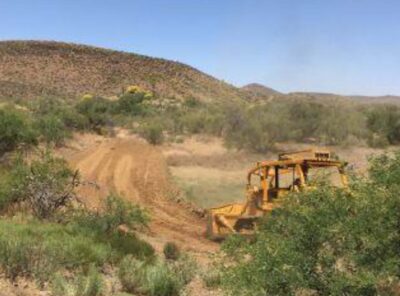
WNRCD secured a $205,000 three-year grant from the Arizona Water Protection Fund to clear and replace invasive salt cedar in local river bottoms.
Stock Ponds Clean and Seal
The District is completing a three-year $28,000 grant from Arizona Game and Fish department to clean and seal stock ponds. The upgraded ponds will provide a more dependable water supply for cattle and wildlife.
Natural Resource Issues
Dunn shared, “We just received word that we will be part of a major statewide grant along with our state organization (Association of Arizona Conservation Districts) to identify and come up with solutions to major (local) natural resource problems.” The size of the grant is not yet known, but it is expected to be a multi-year project.
The WNRCD provides essential services and funds to support agriculture sustainability. It partners with our non-commercial food producers to help address food dessert issues such as the Oracle Community Learning Garden. It advocates with policy makers ensuring they possess awareness of the impact of their decisions on ranching. It aligns other agencies with food producers to assist with rebuilding after a natural disaster such as a fire. It seeks funds to help conserve our resources such as with the Tamarisk mitigation. Finally, they coordinate with our educators to share knowledge about native plants and sustainability.
If you want to volunteer and help build on this vision of sustainability, please reach out the WNRCD. Their information is below.
Website
The WNRCD’s website is www.wnrcd.org. Contact information for the WNRCD is Chris Postel (Clerk), clerk.wnrcd@gmail.com, PO BOX 486, Kearny, AZ 85137.
Leadership
Natural Resource Conservation Districts (NRCD) are local entities of State government seen to have local expert knowledge of the natural resources within the NRCD boundaries.
The Supervisors are charged by the Legislature to protect natural resources and the local tax base as well as public health, safety and general welfare of the people. It is run by three elected and two appointed Supervisors.
The current Supervisors include: Bill Dunn (Chair), Stephen Turcotte (Vice-Chair), Barbara McGuire, Gary Vinson, and Carol DuBois.
Relevant Resources
Arizona Association of Resource Conservation Districts https://www.aacd1944.com/winkleman/
The Winkelman Natural Resources District www.wnrcd.org.
Economic analysis of critical habitat designation for the desert tortoise (Mojave population) https://pubs.er.usgs.gov/publication/70128517
Arizona Ecological Services Southwest Region, https://www.fws.gov/southwest/es/arizona/Sonoran_Tort.htm
Tim Kanavel, Pinal County Economic Development Director, timothy.kanavel@pinal.gov
Arizona Mining Association, info@azmining.org, www.azmining.com
Sonoran Desert Tortoise information: https://tucson.com/news/local/tucsons-sonoran-desert-tortoise-being-reconsidered-for-endangered-species-list/article_6a605ad7-b3f2-5bae-b3db-8c092e6f10d1.html
Liz Harris-Tuck, Treasurer for the Oracle Community Learning Garden
Meyer Family Ranching Information: https://www.azfare.org/Sys/PublicProfile/26599615/3683852
US Fish and Wildlife Service discussion on Endangered versus Threatened Species: https://www.fws.gov/endangered/esa-library/pdf/listing.pdf


